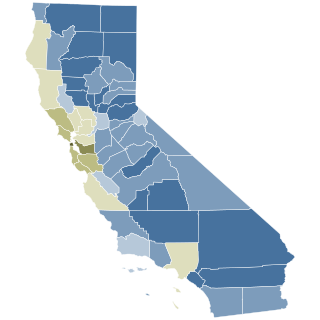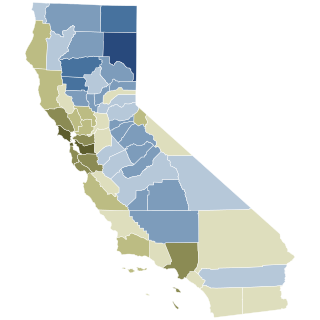
The Twelfth Amendment to the United States Constitution provides the procedure for electing the president and vice president. It replaced the procedure in Article II, Section 1, Clause 3, under which the Electoral College originally functioned. The amendment was proposed by Congress on December 9, 1803, and was ratified by the requisite three-fourths of state legislatures on June 15, 1804. The new rules took effect for the 1804 presidential election and have governed all subsequent presidential elections.

The Twenty-third Amendment to the United States Constitution extends the right to participate in presidential elections to the District of Columbia. The amendment grants to the district electors in the Electoral College, as though it were a state, though the district can never have more electors than the least-populous state. How the electors are appointed is to be determined by Congress. The Twenty-third Amendment was proposed by the 86th Congress on June 16, 1960; it was ratified by the requisite number of states on March 29, 1961.
A recall election is a procedure by which, in certain polities, voters can remove an elected official from office through a referendum before that official's term of office has ended. Recalls appear in the constitution in ancient Athenian democracy. Even where they are legally available, recall elections are only commonly held in a small number of countries including Peru, Ecuador, and Japan. They are considered by groups such as ACE Electoral Knowledge Network the most rarely used form of direct democracy.

A popular initiative is a form of direct democracy by which a petition meeting certain hurdles can force a legal procedure on a proposition. The hurdles the petition has to meet vary between countries, typically signatures by a certain number of registered voters. In direct initiative, the proposition is put directly to a plebiscite or referendum, also called a Popular initiated Referendum or citizen-initiated referendum. In an indirect initiative, the proposed measure is first referred to the legislature, and then if the proposed law is rejected by the legislature, the government may be forced to put the proposition to a referendum. The proposition may be on federal level law, statute, constitutional amendment, charter amendment, local ordinance, obligate the executive or legislature to consider the subject by submitting it to the order of the day. In contrast, a popular referendum that allows voters only to repeal existing legislation.

The 2003 California gubernatorial recall election was a special election permitted under California state law. It resulted in voters replacing incumbent Democratic Governor Gray Davis with Republican Arnold Schwarzenegger. The recall effort spanned the latter half of 2003. Seven of the nine previous governors, including Davis, had faced unsuccessful recall attempts.
Elections in the United States have rules and procedures regulating the conditions under which a candidate, political party, or ballot measure is entitled to appear on voters' ballots. As election processes are decentralized by Article I, Section 4, of the United States Constitution, ballot access laws are established and enforced by the states. As a result, ballot access processes may vary from one state to another. State access requirements for candidates generally pertain to personal qualities of a candidate, such as: minimum age, residency, and citizenship. Additionally, many states require prospective candidates to collect a specified number of qualified voters' signatures on petitions of support and mandate the payment of filing fees before granting access; ballot measures are similarly regulated. Each state also regulates how political parties qualify for automatic ballot access, and how those minor parties that do not can. Fundamental to democracy, topics related to ballot access are the subject of considerable debate in the United States.

In California, a ballot proposition is a referendum or an initiative measure that is submitted to the electorate for a direct decision or direct vote. If passed, it can alter one or more of the articles of the Constitution of California, one or more of the 29 California Codes, or another law in the California Statutes by clarifying current or adding statute(s) or removing current statute(s).
In the politics of the United States, the process of initiatives and referendums allow citizens of many U.S. states to place new legislation, or to place legislation that has recently been passed by a legislature on a ballot for a popular vote. Initiatives and referendums, along with recall elections and popular primary elections, are signature reforms of the Progressive Era; they are written into several state constitutions, particularly in the West. It is a form of direct democracy.
Elections in the Philippines are of several types. The president, vice-president, and the senators are elected for a six-year term, while the members of the House of Representatives, governors, vice-governors, members of the Sangguniang Panlalawigan, mayors, vice-mayors, members of the Sangguniang Panlungsod/members of the Sangguniang Bayan, barangay officials, and the members of the Sangguniang Kabataan are elected to serve for a three-year term.
State ratifying conventions are one of the two methods established by Article V of the United States Constitution for ratifying proposed constitutional amendments. The only amendment that has been ratified through this method thus far is the 21st Amendment in 1933.

The Constitution of the State of Michigan is the governing document of the U.S. state of Michigan. It describes the structure and function of the state's government.

Elections in California are held to fill various local, state and federal seats. In California, regular elections are held every even year ; however, some seats have terms of office that are longer than two years, so not every seat is on the ballot in every election. Special elections may be held to fill vacancies at other points in time. Recall elections can also be held. Additionally, statewide initiatives, legislative referrals and referendums may be on the ballot.
Electoral reform in Virginia refers to efforts to change the electoral system in the Commonwealth of Virginia. Virginia has undergone much electoral change since its settling in 1607, many of which were required by federal legislation. However, it remains a relatively conservative state in this respect compared to California and others which have experimented with various alternative systems.

Elections in the State of Oklahoma are established by the Oklahoma Constitution in Section 1 of Article 3. They are governed by the Oklahoma State Election Board.
This article delineates the age of candidacy laws of the federal government and individual states of the United States. The US has historically had minimum age requirements for many positions, ranging from President to local members of city council. While there is no maximum age limit or point of forced retirement - other countries like Canada enforce retirement ages on judges and senators - there are term limits in some cases, most notably a limit of 2 full terms for the President of the United States.

Proposition 8 of 1911 was an amendment of the Constitution of California that introduced, for the first time, the recall of public officials. This allows the governor, state senators and assemblymen, and other elected officials to be removed from office early by a public vote. It was approved by voters in a referendum held as part of a special election on 10 October. On the same day voters approved two other major political reforms, Proposition 4, which granted women the vote, and Proposition 7, which introduced the initiative and the optional referendum.
A recall election in the state of Wisconsin is a procedure by which voters can remove an elected official from office through a direct vote before his or her term has ended.

A general election was held in the U.S. state of Illinois on November 8, 2022. The elections for United States Senate and United States House of Representatives, Governor, statewide constitutional officers, Illinois Senate, and Illinois House were held on this date.

The Electoral Count Act of 1887 (ECA) is a United States federal law that added to procedures set out in the Constitution of the United States for the counting of electoral votes following a presidential election. In its unamended form, it last governed at the time of the 2021 United States Electoral College vote count. The Act has since been substantially amended by the Electoral Count Reform and Presidential Transition Improvement Act of 2022.

The 2021 California gubernatorial recall election was a special recall election that began in August 2021 and concluded on September 14, 2021, when California voters chose not to recall incumbent Democratic Governor Gavin Newsom, elected for the term January 2019 to January 2023.









